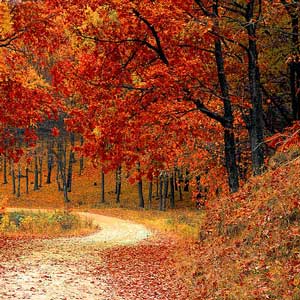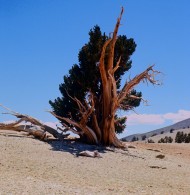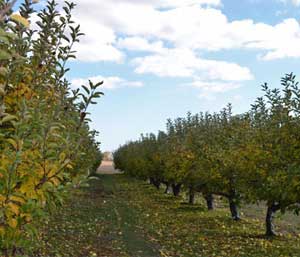Facts about Trees
Posted by A. Douglas / in Science Facts

Learn some important facts about trees. Trees include some of the largest, and oldest living things on Earth. There are trees currently still living that scientists estimate are almost 5000 years old! Learn more tree facts on sciencewithkids.com by reading below.
Scientists estimate that trees cover nearly 10 billion acres of land which is just less than one-third of the Earth's surface.
Parts of a Tree
The top of the tree is called the canopy. It includes the leaves and smaller limbs that branch from the main trunk. The leaves provide sunlight to the tree. Trees use photosynthesis from the sunlight to gain energy and growth.
Trees have a large base called a trunk to support the weight of the top part of a tree. The tree trunk must be strong enough to not only support the weight of the canopy, but also the force of the wind, which blows the canopy. The wood in a trunk is strong, yet flexible. This is why people love to use wood. Its ability to have strength, but flexibility in a wind storm, also make it perfect for building houses and boats.
Around the trunk and limbs is bark. The bark is like the tree's skin. It helps protect the wood of the tree, keeping out bugs, animals and weather elements. It also helps to keep the wood moist inside the tree. Bark is not very flexible. As the tree grows larger, the bark splits. New bark grows under the old bark, then the old bark falls off the tree.
Below the ground is the part of the tree we do not see. Trees have large, strong roots to anchor the tree to the ground and help it from blowing over in a wind storm. The roots also provide water to the tree from the water in the ground. The roots also provide minerals and nutrients from the soil.
Many trees can live much longer than animals or people. Trees start to grow very thin, like a twig. Then as they get older they grow thicker. Each year, trees grow a new ring of growth. Scientists can estimate the age of trees by counting the number of rings near their trunk. Each ring of growth is equal to a year of life.
Tree Facts: Oldest Trees

Bristlecone Pine Photo Credit: USDA Forest Service
- The oldest known trees are the Bristlecone Pine Trees. The Bristlecone pines are odd-looking trees that have extremely dense wood and very little foliage (leaves). They are known to live almost 5000 years (maybe longer!) In 1964 the U.S. Park Service allowed scientists to cut down a very old Bristlecone pine tree that was named Prometheus. The Bristlecone Pine tree is known to not grow a ring in years that have difficult growing seasons. Scientists counted the 4900 rings, so Prometheus was at least 4900 years old.
- Find out more about Prometheus and how to see live Bristlecone Pine Trees at the Park Service Page.
Tree Facts: Tree Categories
There are two tree categories deciduous and evergreen. Deciduous trees lose their leaves in the Fall each year. As the leave dry out before they fall off the trees, many turn different colors. Evergreen trees have thicker leaves. Many have pine or Juniper needles. Some, like the Evergreen Oak, have leaves that are similar to deciduous tree leaves. Evergreen leaves and needles do not fall off every year, but may grow for several years before drying out and falling off.
Tree Facts: How Animals and Insects Use Trees
Animals and insects have many uses for trees. Some animals such as birds, bats and monkeys may nest or live in trees. Animals eat fruit and berries from fruit trees. Animals such as squirrels and birds, eat seeds nuts from trees. Insects eat the wood and bark from dying trees. Bees collect the nectar from flowing trees. Grubs and other insects and animals that live below the ground each tree roots. Animals and bugs such as the caterpillar, eat tree leaves.
Tree Facts: How People Use Trees
People have many uses for trees. We use the wood from trees to build houses, boats, bridges, docks, buildings, furniture, pencils, and many other common products. We also make paper and cardboard from trees. People eat the some seeds and nuts from trees. Common tree nuts include coconuts, almonds, pecans, walnuts, cashew nuts, Brazil nuts, pistachio nuts, pine nuts and macadamia nuts. Trees also grow fruit like bananas, apples, pears, cherries, oranges, lemons, grapefruit, lime, peach, mango, guava, pomegranate, and plums. Olives and avocado also grow on trees. We use trees for shade, to keep slopes stable, for beauty and to break the wind.

